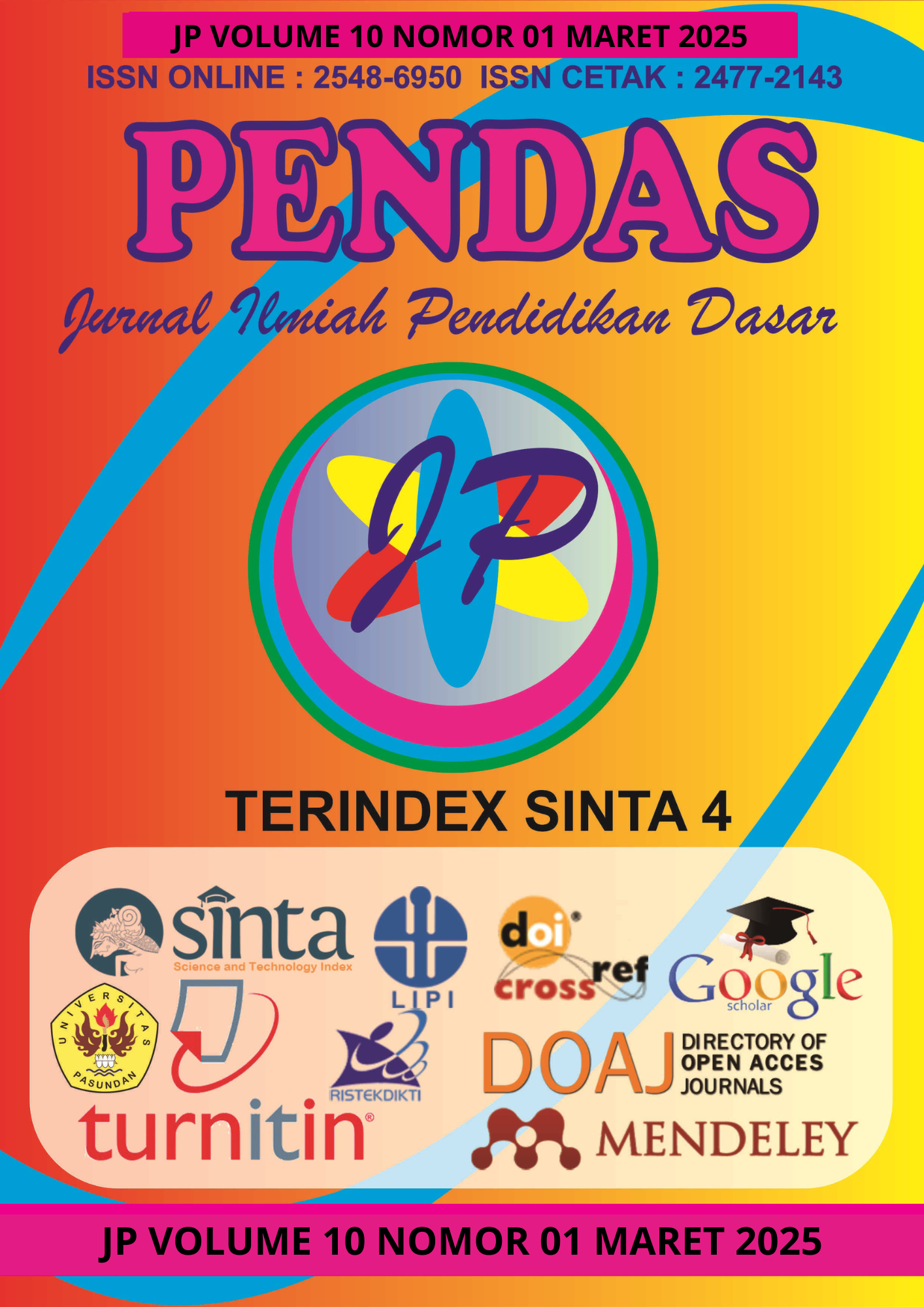PENGARUH GADGET TERHADAP PERKEMBANGAN MORAL ANAK SD KELAS 3 DI SDN 06 PAGI KEBON JERUK
DOI:
https://doi.org/10.23969/jp.v10i01.21767Keywords:
Gadget Usage, Moral Development of Children, Quantitative Associative ResearchAbstract
This research is grounded in the findings of a preliminary study conducted on 3rd-grade students at SDN 06 Pagi Kebon Jeruk, revealing a high level of student attachment to their gadgets. This attachment carries the potential risk of gadget addiction, leading to psychological disturbances such as concentration problems, hyperactivity, and moral behavior issues in children. The primary aim of this study is to investigate the impact of gadget usage on the moral development of 3rd-grade elementary school students at SDN 06 Pagi Kebon Jeruk. The research employs a quantitative associative approach. The research population comprises 96 participants of third-grade students at Sekolah Dasar Negeri 06 Pagi Kebon Jeruk Jakarta Barat. In The sample in this study was selected using the total sampling technique.. Data were collected through a questionnaire instrument utilizing a Likert scale. The study reveals a significant positive influence of gadget usage on the moral development of children at Sekolah Dasar Negeri 06 Pagi Kebon Jeruk Jakarta Barat (sig p 0.044, with a simple linear regression equation Y= 32.954 -0.185X) and an R-square value of 0.43, indicating a 43% influence of gadget usage on child development. The remaining percentage is influenced by other variables or factors.
Downloads
References
Ali, M.Makhrus, Tri Hariyati, Meli Yudestia Pratiwi, and Siti Afifah. 2022. “Metodologi Penelitian Kuantitatif Dan Penerapannya Dalam Penelitian.” Education Journal.2022 2(2): 1–6.
Azizah, M. (2021). The Relationship Between Time Management, Self Regulation, And Smartphone Addiction. Empati-Jurnal Bimbingan Dan Konseling, 8(2), 82–98.
Cabello, P., Claro, M., Rojas, R., & Trucco, D. (2021). Children’s and adolescents’ digital access in Chile: The role of digital access modalities in digital uses and skills. Journal of Children and Media, 15(2), 183–201.
Kopecký, K., Fernández-Martín, F.-D., Szotkowski, R., Gómez-García, G., & Mikulcová, K. (2021). Behaviour of children and adolescents and the use of mobile phones in primary schools in the czech republic. International Journal of Environmental Research and Public Health, 18(16), 8352
Ling, R. (2022). Mobile communication culture among children and adolescents. In The Routledge international handbook of children, adolescents, and media (pp. 127–134). Routledge.
Mills, G. and Gay, L. (2018) Educational Research: Competencies for Analysis and Applications. 12th Edition, Pearson, London.
Mukhtazar. (2020). Prosedur Penelitian Pendidikan. Yogyakarta: Absolute Media.
Pratama, Muh Rizaldi, and Ninis Sudirman. 2023. “Pengaruh Gadget Terhadap Perkembangan Anak Usia Dini The Effect Of Gadgets On Early Children’s Development.” Pengaruh Gadget Terhadap Perkembangan Anak Usia Dini 3(5): 136–43.
Sugioyono (2022). Penelitian kuantitatif. Diakses pada 03 Januari 2023,dari.https://www.detik.com/bali/berita/d-6437769/penelitian-kuantitatif-pengertian-prosedur-dan-jenisnya
Syofyan, H., Susanto, R., & Ulum, M. B. (2021). Pelatihan Multimedia bagi Guru dalam Menunjang Pembelajaran Daring. International Journal of Community Service Learning, 5(4), 273–281.
Downloads
Published
Issue
Section
License
Copyright (c) 2025 Pendas : Jurnal Ilmiah Pendidikan Dasar

This work is licensed under a Creative Commons Attribution 4.0 International License.



















